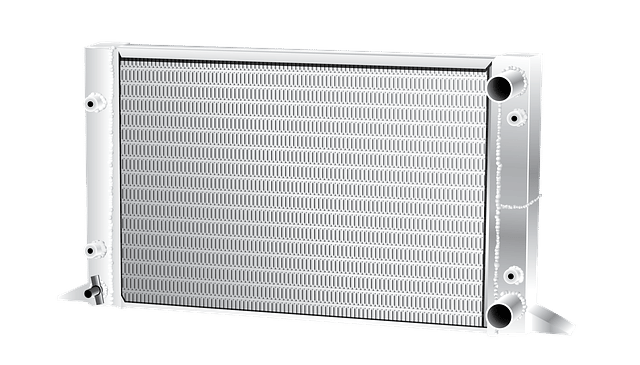When it comes to automobiles, there are many parts that work together to keep everything running smoothly. One of those parts is the electrical system. This complex network of wires and circuits keeps everything powered up, including lights, fans, and even the air conditioning. But just because something works today does not mean it always will. As modern vehicles become increasingly technologically advanced, they rely heavily on the electrical system for everything from starting the vehicle to keeping the temperature inside cool.
The problem is that while some things are getting better, others are becoming worse. For example, the number of problems associated with the electrical system is increasing. Some people blame this on the increased use of electronics in everyday life, like smartphones and tablets. Others say it’s simply because manufacturers are making cars more advanced. Whatever the reason, the fact remains that the electrical system is one of the biggest causes of mechanical failures in vehicles.
5 Common Car Electrical Problems
Electrical problems are one of the most frustrating things about owning a car. They’re often hard to diagnose, especially if you don’t know what to look for. Here are some of the most common symptoms of car electrical issues.
The following list of automotive electrical problems includes some of the most common ones you might encounter while driving. If one of these sounds familiar, don’t hesitate to take your car into a shop for a professional diagnosis.
1. Engine Not Starting Correctly
If you hear a clicking sound when trying to turn over your vehicle’s engine, you might want to take it into your local mechanic. While there are many reasons why your engine won’t start, one of the most common causes is a faulty starter motor. A starter motor is responsible for spinning up the crankshaft of the engine. This allows the car’s cylinders to fire properly and begin turning the pistons.
The starter motor itself consists of three main parts: a solenoid, a gearbox, and a flywheel. The solenoid contains coils that produce magnetic fields. These fields interact with permanent magnets in the gearbox, causing the gears to spin. The flywheel spins at high speeds due to friction caused by the movement of the gears.
When the engine starts, the starter motor engages the ignition system and sends electricity to the coil. Once the coil receives sufficient voltage, it generates a magnetic field strong enough to attract the magnet attached to the flywheel. As the flywheel turns, it spins the crankshaft, which begins rotating the pistons.
While the starter motor isn’t usually the cause of problems, it’s important to note that it’s prone to failure. In fact, the National Highway Traffic Safety Administration reports that about half of all cars built since 2000 have had a starter motor fail.
2. Dead or Damaged Battery
A discharged or dead battery is obviously an electrical issue. But don’t just replace the battery without looking at other possibilities. Electrical problems in cars include corroded connections, loose connections, and broken wires.
Car batteries last about five years before needing replacement. So, you might want to schedule a professional inspection every couple of years.
If the car won’t start, take the battery in to a mechanic to test it. They can tell you whether there’s something wrong with the charging system, the starter motor, or the ignition switch.
3. Malfunctioning of Lights
The lights are critical to the safety of vehicles traveling on roads across the globe. For example, turn signals, brake lights, headlights, interior lighting, fog lamps, running boards, tail lights, door handles, and mirrors allow drivers to communicate with each other and prevent accidents. In addition, interior lights ensure drivers can easily see items such as maps, tools, and passengers during nighttime driving.
If the vehicle’s electrical system fails, it may cause the lights to fail as well. A faulty ignition switch, loose wiring, or a broken alternator belt could cause the lights to go out. Loose connections or damaged components could also lead to flickering lights.
4. Fuse Damage
If you notice that your fuse box keeps blowing out, there could be several causes. One of the most common problems is a blown fuse. Blowing fuses usually indicates that something is wrong with the wiring inside the fuse box. This could be caused by corrosion, poor connections, loose wires, or even a short circuit. You should always check the fuses periodically, especially if you’re noticing multiple instances of blowing out.
The best way to avoid getting stranded on the road is to know how to troubleshoot a fuse box. If one fuse blows, you’ll want to replace it immediately. Don’t wait for another fuse to blow. Once a fuse blows, it can cause serious damage to the rest of the system.
5. A Smell of Burning Plastic
If you hear a strange sound coming from your car, it could be anything from a loose belt to a malfunctioning airbag. But if you notice a burning plastic smell emanating from your vehicle, chances are good that there’s something much worse going on inside. A burning smell like this indicates that the car’s electrical system is likely compromised. This could mean that the battery is dead or that wires are shorted out. Either way, it’s best to take the car to a trusted mechanic for inspection.
Tips For Preventing Complications in the Car Electrical System
1. Check fuses
Fuse panel locations vary depending on the make and model of your car. Look under the hood to find the fuse box. You’ll see several large black boxes labeled “fuse.” Each fuse box contains dozens of small plastic fuses. Replace each fuse according to the manufacturer’s instructions. Some fuses are located inside the cabin; others are behind the dash.
2. Check battery terminals
If your battery is low, check the positive (+) and negative (-) posts for corrosion or damage. Clean off any dirt or debris that could cause shorting. Use a clean cloth to wipe away any moisture or grime. Inspect both terminals for cracks, dents or corrosion. Disconnect the battery cables and test the connections. Make sure there aren’t loose wires hanging around.
3. Test headlights
Check the lights on your dashboard to ensure they’re working properly. Turn on the high beams and the fog lamps. Does each light illuminate correctly? Are the bulbs burning brightly? Do they flicker or dim? Is the headlight switch illuminated? Check the wiring harnesses for signs of wear or tear.
How to Find Wiring Fault in Your Car
If you are having trouble finding a shorted wire, it could be because of something else entirely. In fact, most wiring problems are caused by one of three things: a loose connector, corrosion, or a broken wire.
In case you’re wondering how to tell whether something is wrong with your car’s wiring, here are a few things to watch out for.
1 – Voltage at the load point.
A dead circuit won’t draw power, so it shouldn’t show up on a multimeter or meter. But if you do see voltage, the problem could be one of three things: a bad ground connection, a faulty component, or a short circuit somewhere else in the system. To figure out which, start by checking the ground connections.
2 – Grounding
You’ll want to make sure that all metal parts are properly grounded. This includes battery posts, fuses, and ground clamps on wire connectors. Also check the chassis, under the hood, where the battery connects to the rest of the car. All metal surfaces must connect together electrically.
3 – Short circuits
When wires touch each other, they form a path around the area where they meet. These paths act like antennas, allowing electricity to flow along them. If you notice that your car seems to run hot even though it’s plugged into a wall outlet, that’s probably because of a short circuit. There are several ways to find them. First, take off your glove box door and look underneath. If you see a loose wire sticking out, pull it away from the body panel and try again. Next, turn off the ignition and open the hood. Look for bare spots on the underside of the hood. If you see exposed wiring, cover it with tape. Finally, look for signs of corrosion. Corrosion usually starts near joints, so look for places where the insulation has been damaged.
4 – Ohm’s Law
If you don’t know much about electronics, you might think that resistance equals voltage divided by current. And while that’s true, it doesn’t always work out that way because of the way electricity works. In fact, it’s possible for a wire to carry too little current without showing up as high voltage. So if you measure the voltage across a resistor and it’s zero, that doesn’t necessarily mean that there’s no electricity flowing through the wire. Instead, it just means that the wire isn’t carrying enough current.
To fix this, use your ohmmeter to measure the resistance of the wire. If it’s less than 0.5 milliohms, the wire is fine. Anything over 1 milliohm indicates a problem.
5 – Dead Circuit
The easiest way to find a dead circuit is to use your multimeter to measure the voltage at the load point of the circuit. A good rule of thumb is to look for voltage anywhere from 5 volts up to 15 volts. If you don’t see anything, it probably isn’t working.
A dead circuit is usually caused by a faulty ground connection or a corroded conductor. This can happen if you’ve been driving around with wet shoes, or if you live in an area prone to heavy rain. Corrosion is much harder to detect since it affects conductors that aren’t visible. You’ll know you’re dealing with this problem if you notice water damage to the vehicle.
Conclusion
In summary, car electrical systems have multiple points of failure. The most common ones are grounding issues, short circuits, and dead circuits. It’s important to test these before you drive off in your new ride.







